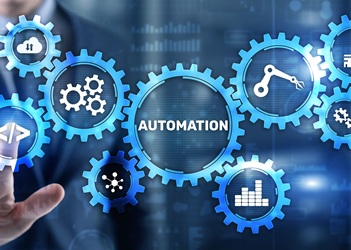In today’s business climate, automation is increasingly vital to achieving operational efficiency and maintaining competitiveness. Recent findings from a survey conducted by Redwood Software reveal that nearly three-quarters of businesses have ramped up their automation investments over the past year. While this enthusiasm reflects a growing recognition of automation’s strategic importance, substantial barriers to effective utilization persist. Only 10 percent of companies prioritize automation adoption, resulting in significant underutilization of available tools and missed opportunities for return on investment (ROI).
The current landscape is characterized by a stark contrast between investment and implementation. The survey indicates that while 61 percent of organizations find their automation tools underutilized, more than two-thirds view automation as either mission-critical or very important to their success. The mismatch between belief and action stems from fragmented strategies, siloed implementations, and a general lack of readiness among businesses to adopt advanced technology, particularly artificial intelligence (AI). While 65 percent of respondents believe AI has the potential to significantly enhance automation efforts, almost 40 percent do not feel ready to embrace this change.
A closer look at the strengths and weaknesses of existing automation tools can help businesses navigate this complex environment. Consider the platforms Make and Zapier, both of which facilitate workflow automation without extensive programming knowledge. Make offers users a flexibility that allows for intricate workflow designs, making it particularly suitable for organizations with sophisticated automation needs. However, this complexity may deter SMBs that require straightforward implementations. On the other hand, Zapier excels in its user-friendly interface and strong community support, making it a favorable choice for businesses seeking to implement basic automation quickly and efficiently. Both platforms deliver significant ROI through efficiency gains and cost reductions; thus, the choice between them largely depends on a company’s specific requirements and existing technological sophistication.
Further comparisons extend into the realm of AI-driven automation. Platforms like OpenAI and Anthropic are emerging giants, each offering distinct strengths. OpenAI, known for its robust language models, can drive comprehensive automation solutions, facilitating everything from customer service chatbots to advanced data analytics. However, the sophisticated capabilities of OpenAI come with higher costs and require a certain level of expertise to fully leverage, posing potential limitations for SMBs with constrained budgets. Conversely, Anthropic focuses on AI safety and robustness, offering businesses a level of assurance that could be invaluable in compliance-heavy industries. While it may not boast the same versatility as OpenAI, its emphasis on ethical AI allows organizations to adopt automation with peace of mind.
A data-driven analysis of these tools reveals that while upfront costs for AI and automation platforms can appear substantial, savvy businesses recognize the potential for considerable long-term savings. Nearly 40 percent of survey respondents noted that automation reduced their costs by at least 25 percent, with 12 percent reporting reductions exceeding 50 percent. Investing in the right platform can yield these types of savings, but businesses must start with a clear understanding of their operational needs and the scalability of the solutions being considered. As companies grow, the tools they select should not only meet current demands but also be adaptable to future requirements.
Despite the growing enthusiasm for automation and AI, the key challenge remains: ensuring effective adoption across the organization. Just 27 percent of companies believe they are fully utilizing their automation tools, indicating a pressing need to address this issue to unlock the full value of their investments. Companies are advised to consider engaging trustworthy orchestration partners to provide strategic support, ensuring that automation tools are fully integrated into their operational frameworks. By fostering a culture of continuous learning and agile adaptation, organizations can create a conducive environment for automation to flourish.
In conclusion, while the promise of automation and AI is undeniable, the path toward realization remains fraught with challenges. SMB leaders must judiciously analyze their choices among various platforms, weighing factors like cost, ROI, and scalability, to craft an approach tailored to their unique contexts. Establishing a robust framework for adoption and aligning organizational strategies with these technologies is essential for driving meaningful efficiencies. Businesses that successfully navigate these complexities will not only enhance their operational capabilities but also position themselves favorably in an increasingly automated future.
FlowMind AI Insight: Effective automation is no longer an ancillary option but a necessity for business competitiveness. As companies strive for operational excellence, careful evaluation of automation and AI tools will be pivotal in facilitating efficient, scalable growth. Organizations that prioritize strategic adoption will remain at the forefront of industry advancements.

